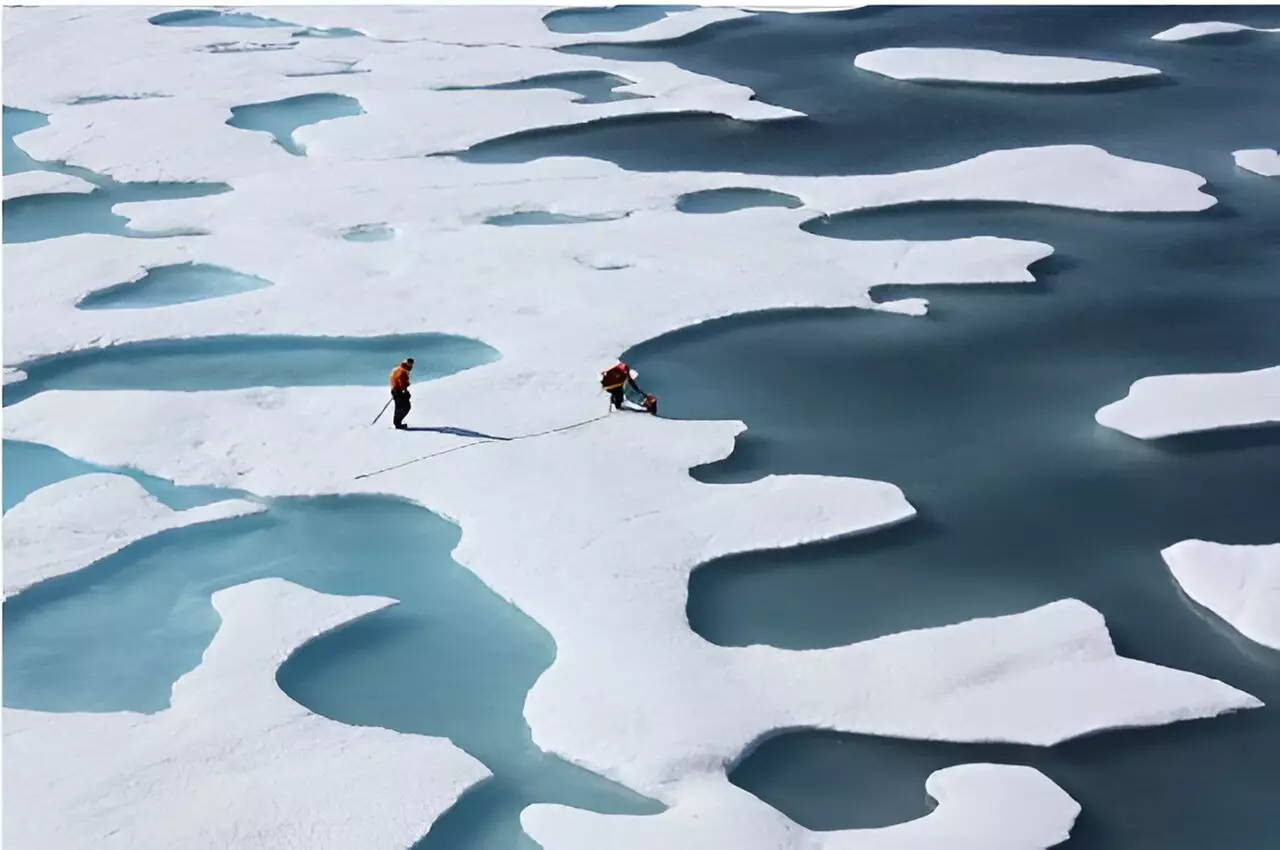Recent research from the University of Michigan has unveiled a disconcerting trend: the loss of Arctic sea ice has significantly diminished its cooling effect, causing a ripple effect that impacts global temperatures. Approximately a quarter of the Arctic’s cooling power has vanished since 1980, and worldwide, we’re facing a staggering reduction of nearly 15% due to this existential crisis. This study underscores a troubling reality: as sea ice continues to dwindle, the consequences for the climate are becoming increasingly dire and could surpass prior predictions outlined by climate models.
Beyond Affected Areas: The Broader Implications
One of the critical findings from the research is the alarming proportion by which sea ice’s cooling ability has decreased. The study highlights a worrisome pattern where the reduction in cooling effects is nearly double that of the overall decrease in sea ice area. This finding is particularly important because it indicates that simply measuring the extent of ice is not enough; the quality and reflectivity of the remaining ice are equally crucial. Without comprehensively addressing both aspects, our understanding of climate dynamics remains dangerously incomplete.
Mark Flanner, leading the research efforts, emphasizes the technological advancements in satellite monitoring that have now allowed for a direct assessment of the feedback mechanisms associated with melting ice. This approach enables scientists to bypass previous assumptions reliant on lengthy simulations, offering fresh insights informed by real, observational data accrued from 1980 to 2023.
The Hemisphere Divide: Arctic vs. Antarctic
The Arctic consistently exhibits the starkest declines in cooling power, especially in recent years. Conversely, initial perceptions suggested the Antarctic’s ice cover was more resilient. For the better part of a decade, Antarctic sea ice seemed stable, even trending upwards. However, this notion came crashing down post-2016, when a Texas-sized section of ice shelf melted catastrophically. Following this event, the Antarctic has seen a significant drop in sea ice coverage and, alarmingly, has failed to bounce back.
What stands out is the emerging recognition of thinner, wetter ice becoming less reflective. As warmer temperatures impact ice conditions, the ability of this ice to bounce back solar radiation is severely compromised. This phenomenon in the Arctic points to a potential shift in understanding regarding the Antarctic, suggesting that its ice dynamics may also be subject to similar changes.
Radiative Feedback: A Critical Component Ignored
The findings indicate that since 2016, the repercussions of diminishing Antarctic sea ice extend well beyond mere physical loss; they add an estimated 40% to warming feedback mechanisms from ice loss. This statistic is alarming, as it reveals a gap in the climate models currently employed that may underestimate the amount of solar energy trapped by an ever-warming climate. Researchers are now compelled to rethink existing climate models and consider the new radiative effects of diminishing, less reflective ice—especially in Antarctica, which had previously been regarded as more stable.
As the evidence mounts, climate scientists are urged to deliver this updated understanding of sea ice dynamics to inform both research and policy-makers. The chilling statistics presented should serve as a clarion call, illuminating the urgent need for innovative climate adaptation strategies.
The Path Forward: Adapting to a New Climate Reality
With advancing technology enabling more detailed observations of ice dynamics, scientists intend to communicate these findings through updated metrics available to the climate scientific community. The implications of lost cryospheric radiative cooling are staggering and could reshape climate adaptation strategies globally. It’s no longer sufficient to assume a linear relationship between ice cover and temperature; the quality of that ice must also be prioritized in future analyses and policy decisions.
Moreover, as regions in the Arctic and Antarctic undergo rapid transformation, the world must grapple with the urgent need for climate policies that reflect these complex realities. Ignoring the dual effects of ice loss could lead to misguided strategies that may fail to address the root causes of climate change effectively. Ensuring accurate and timely information reaches the public and policymakers is crucial in fostering a proactive rather than reactive approach to our evolving climate crises.

